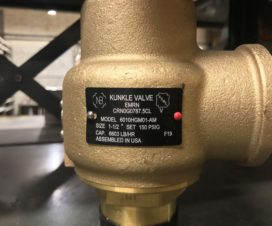When you’re in the market for a pressure relief valve, a sales rep has probably asked you “what set pressure do you need?” This piece of information is required to purchase a new pressure relief valve. You might have been able to retrieve this info from an old valve nameplate or look it up in your computer system, but what does the value mean?
Let’s take a look.
What is set pressure?
Set pressure is the point at which a pressure relief valve is set to open under service conditions. It’s measured in pounds per square inch gauge (PSIG).
How do I determine the appropriate set pressure?
Set pressure sounds simple, right? Not always — there are rules and recommendations you should keep in mind when you’re determining the set pressure for pressure relief valves.
- The set pressure of your valve should never exceed the MAWP (maximum allowable working pressure) of the equipment the valve will be placed on.
- It is recommended that your maximum operating pressure be 10% below your valve’s set pressure to ensure optimal seat tightness.
- Identifying the process media, or service, of a valve is important to set pressure. If a valve has the correct set pressure but is used on the wrong application, there’s a chance the valve wouldn’t open when needed. This could cause the system or vessel to overpressure.
How does a valve “know” when the set pressure is reached and it needs to open?
When the pressure in a system or vessel increases to a dangerous level, the pressure relief valve is there as the last line of defense. The valve opens when the inlet pressure exceeds the set pressure. When vessel pressure slightly exceeds the set pressure, fluid moves past the seating surface into the huddling chamber. The controlled pressure built up inside the huddling chamber will then overcome the spring force, causing the disc to lift and the valve to pop open.
Does the valve close as soon as the pressure falls to the set pressure?
After the valve opens, it will only close once the pressure has dropped a certain percentage below the set pressure. This percentage is referred to as blowdown, and will typically range anywhere from 4% to 10% depending on the applicable code.
—
Determining set pressure is just one thing you need to determine when you’re specifying a pressure relief or safety valve. If you need assistance finding the right-fit valve, contact us at (314) 665-1741.




